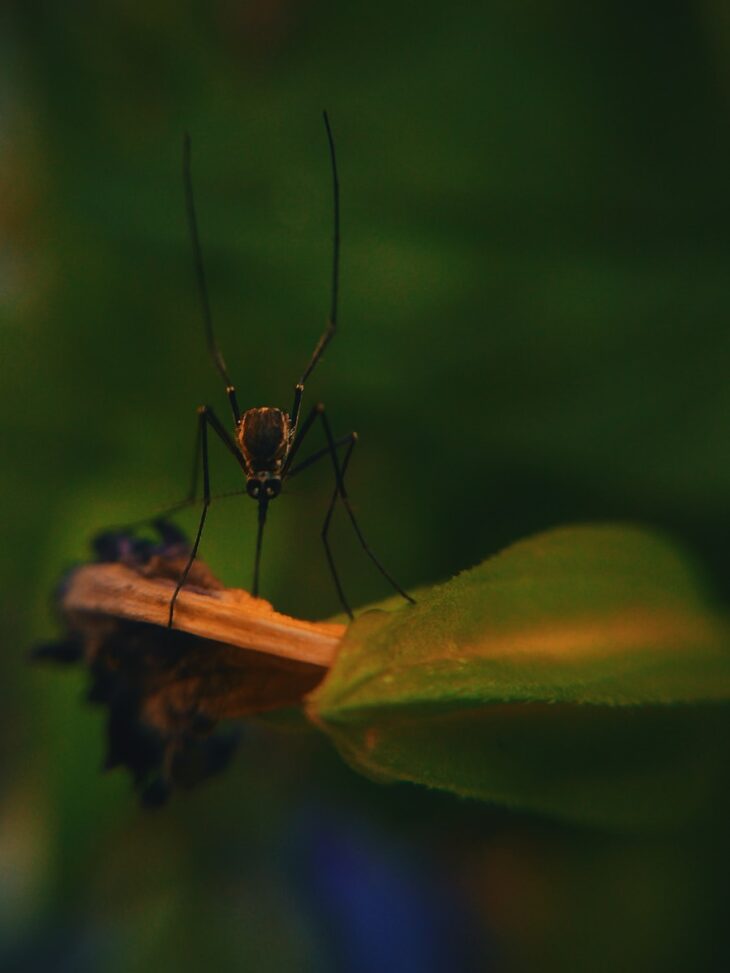As temperatures continue to rise, the geographical range of mosquitoes is expanding, increasing the risk of mosquito-borne viral diseases. Lethal among these are a group of mosquitoes called Aedes, that threaten public health by transmitting diseases like chikungunya, dengue, yellow fever, and Zika.
When a female mosquito, called a vector, bites a virus-infected human, she ingests the virus. Within her body, the virus multiplies. When the infected mosquito bites another human, she transfers the virus to that human through her saliva. With more mosquitoes and the rapid evolution of the viruses they carry, scientists want to develop innovative approaches to combat viral diseases more effectively.
Historically, scientists used chemical insecticides to fight mosquitoes, but over time, the insects began to resist them. Health officials tried vaccinating people against viral diseases, but widespread vaccination is challenging due to low availability, high costs, and slow distribution. Scientists have attempted to release sterilized male mosquitoes into the wild that yield non-hatching eggs but this strategy faced logistical challenges.
In the early 2000s, scientists developed a gene-cutting method from bacteria as a tool to edit human and animal genes. The method is known as CRISPR-Cas, and bacteria naturally use it to defend themselves against viruses. CRISPR stores a ‘memory’ of every virus that infects the bacterium. When the bacterium is infected by a virus CRISPR has seen before, it directs a protein called Cas to kill the invading virus by cutting its genome.
Scientists have identified various Cas proteins. The first one they identified was Cas9. They found that Cas9 makes a clean cut in the viral DNA-based genome, like scissors. However, since the viruses carried by the Aedes mosquito have an RNA-based genome, Cas9 cannot cut them.
To overcome the Cas9 protein’s inability to cut RNA, an international team of scientists used a different Cas protein, called Cas13, that works on RNA. Cas13 cuts the invading viral RNA-based genome, but it also unintentionally cuts nearby RNAs of the host bacterium, like a hammer striking indiscriminately. They called their new method vRNA Expression Activates Poisonous Effector Ribonuclease, or REAPER for short.
The researchers genetically engineered Aedes aegypti mosquitoes to produce Cas13 proteins, which they typically lack, to assess how effective Cas13 is in cutting RNA molecules. RNA molecules are like the transcript of a gene’s instructions. Scientists count how many RNA molecules are in a tissue to check how busy a gene is in that tissue. The fewer RNA molecules the tissue has, the less active the gene is.
They injected the mosquitoes with a synthetically made RNA that identified RNA molecules matching the gene responsible for giving mosquitoes their yellow color. This synthetic RNA helped guide Cas13 to the correct RNA molecules to cut. The scientists explained that cutting this RNA should not kill the mosquitoes, just alter their color. But when they injected the genetically modified mosquitoes with the synthetically made RNA, many died, and only 8% survived to adulthood. The researchers discovered that the injected mosquitoes had 13 times fewer RNA molecules of the gene responsible for the yellow pigment than the uninjected mosquitoes, suggesting Cas13 effectively destroyed the RNA it was supposed to.
The researchers also counted the total number of RNA molecules in the injected mosquitoes to see how many other nearby RNAs Cas13 cut. To do so, they crushed 18 injected mosquito larvae together, collected all their RNA, and sequenced them to determine how active their genes were. They noticed that almost half of the total number of RNAs were turned on or off differently from the uninjected mosquitoes.
For a more practical test of how the REAPER system worked on mosquito-borne viruses, the researchers tested whether Cas13 effectively cut the chikungunya virus’s RNA-based genome. Rather than infecting the mosquitoes with the actual chikungunya virus, they injected mosquitoes with a synthetic RNA strand that mimics it. They found that 35% of the mosquitoes in this experiment died within 5 days after they were injected because Cas13 also cut the mosquitoes’ own RNA. When they increased the amount of synthetic mimic RNA they injected into the mosquitoes, Cas13 destroyed more of the nearby mosquito RNA.
The researchers concluded REAPER functions like a molecular Trojan horse inside mosquitoes. It remains inactive until it encounters foreign viral RNA. Once triggered, it destroys the viral RNA, decreasing the severity of the infection. But it also destroys the host mosquito’s RNA, ultimately killing the mosquito. The authors said that this strategy, combined with other vector-control approaches, can minimize or eliminate the risk of mosquitoes transmitting the chikungunya virus. They suggested further researchers focus on optimizing and refining REAPER to ensure its safety and success in treating other mosquito-borne viral diseases.


